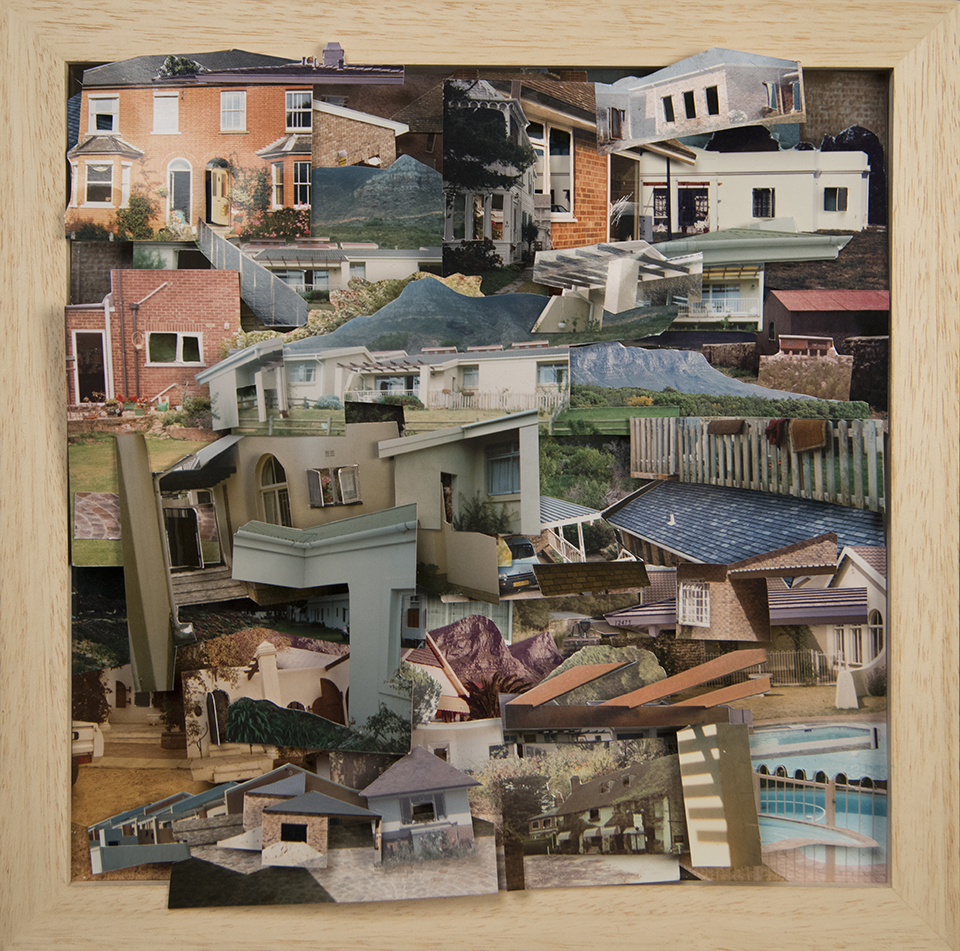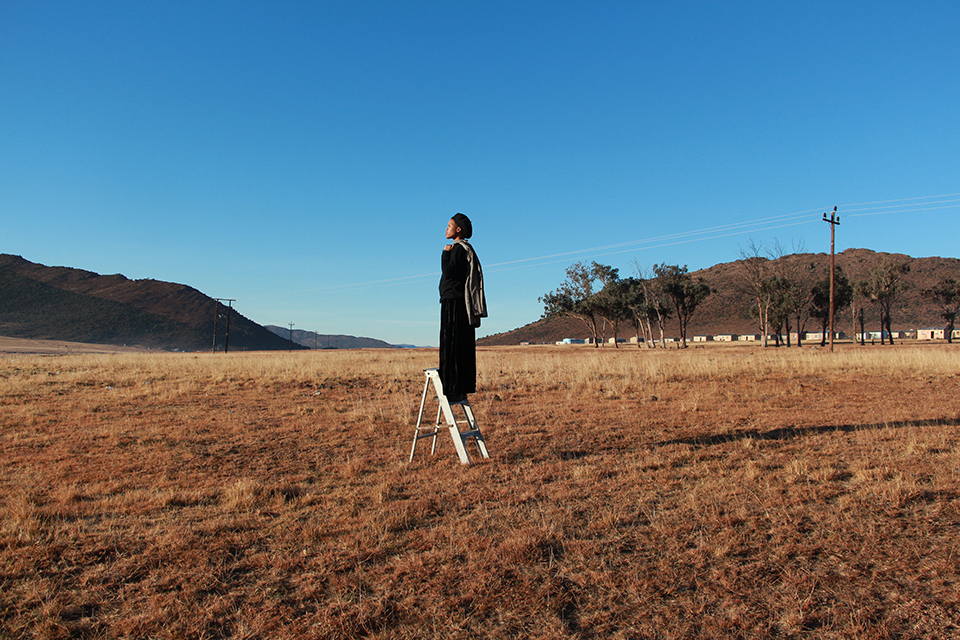I interviewed photographers Nobukho Nqaba, Thandiwe Msebenzi and Sitaara Stodel about their upcoming exhibition, Displacement.
Having met while studying at Michaelis School of Fine Art at UCT and being exposed to each other’s individual creative practices, being awarded the Tierney fellowship solidified their desire to thread together the similarities in their work.
They each create work based on their own experiences, with their art practices providing an avenue for reflection, questioning and unraveling. Sitaara’s current work revolves around the themes of home, identity, memory and exploring the subconscious. Nobukho prefers not to box her work into fixed themes, but has created work that focuses on migrant life, movement and otherness, and has recently made a body of work about mourning, letting go and “finding my own self”. Thandiwe’s recent work addresses rape culture and the silencing of womxn in places of comfort.
The title of their exhibition refers to displacement both figuratively and literally, and the impact that comes from feeling out of place. “We talk about issues of being lost and this loss comes from being in spaces that are not permanently ours. These are often spaces that are supposed to provide comfort and those spaces include the home,” Nobukho explained. Their work addresses how in these places of comfort issues of power arise and manifested through enactments of particular understandings of masculinity in relation to the female presence. “We felt that we need to have this collective voice and bring about this educational exhibition to bring issues around movement, otherness and displacement to the fore,” Nobukho explained.
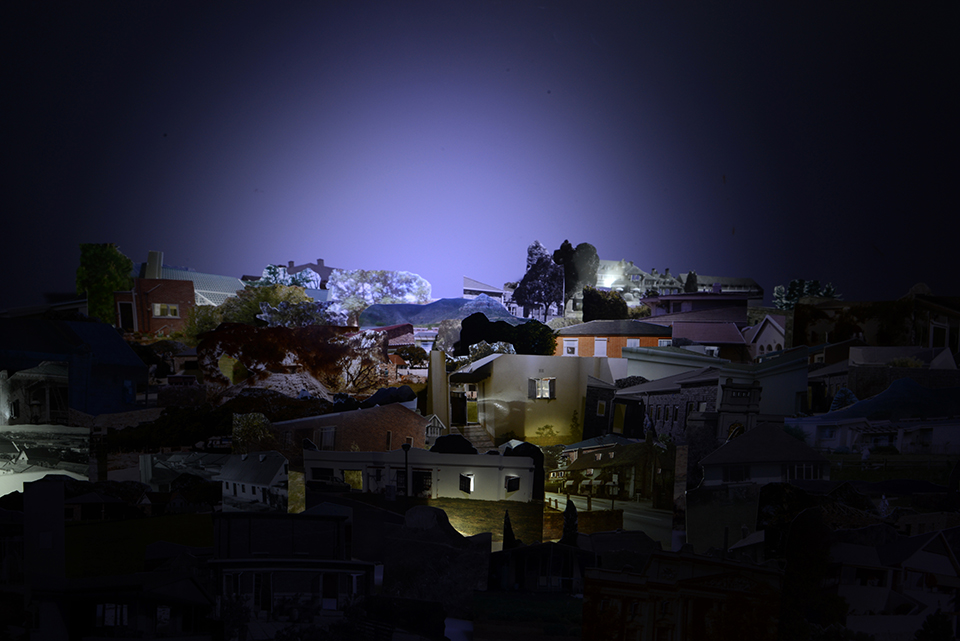
In Sitaara’s series of works titled Suburban Dream she uses photography as a “tool for suspension of belief”. In her work A House Not A Home, 1 Sitaara uses collage and photography to create the illusion of looking at a landscape of houses. However upon closer inspection the viewer notices that it is in fact a small set with cut outs of images of different houses, lit up to look like middle class suburbia at night. This brings into question the understanding of photography as a form of documentation that reveals ‘the truth’. Sitaara also explains that this work is part of her exploration of her memories of constantly having to move with her mother and sisters as a result of being evicted from middle class houses they could not afford. “This photographic series is almost like looking at all of the homes I lived in and the cross-over of memories that I have with these houses,” she explains. The theme ‘eviction’ is used in her work as an “echo” to her own experiences of growing up but also speaks to South Africa’s history of evictions, which has a large influence on her feelings around the importance of unpacking feelings of displacement. “All of us being woman of colour, I feel that we have an understanding of how people treat us differently, struggling to feel like we have a ‘place’ – a place in South Africa, a place in the art world, a place to exist safely etc.”.
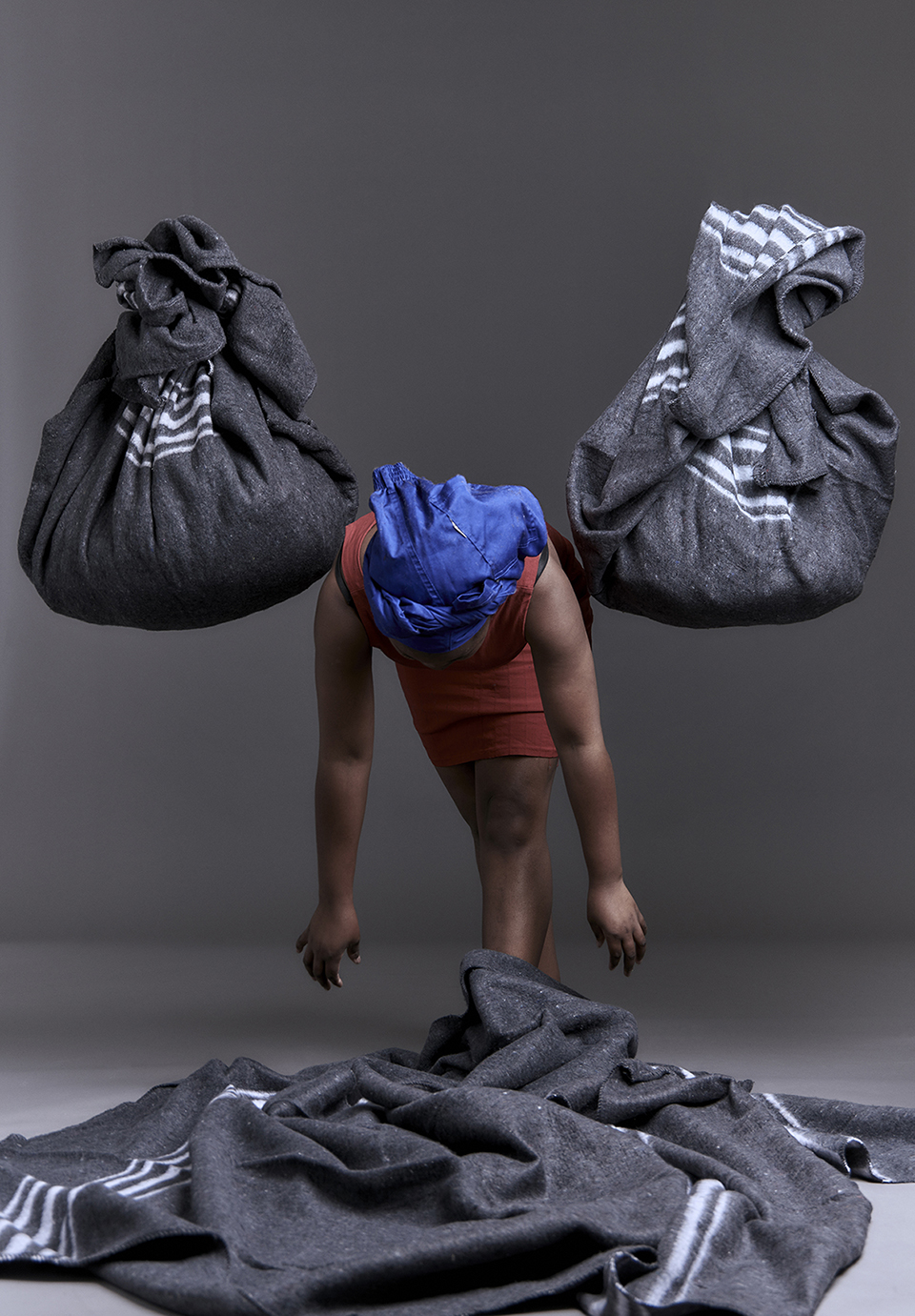
Nobukho uses photography to document her performativity. “I perform and document what I do and the final work becomes the photograph of the actual performance,” she explains further. In her current body of work displacement happens as the result of a state of mind because of longing for her father who has passed on. “At the same time I am fighting certain emotions that hold me back and I use material that is reminiscent of a migrant and a miner which speaks a lot about the history of [migrant life] in South Africa. I use my own female body to fight a male presence that is haunting me both in a good way and in a bad way”. The materials that she uses contain the narrative of being displaced from a place of familiarity for her father who worked on the mines. Nobukho wraps herself with these materials, “often burdening myself with an absence that is continuously present in my mind and also trying to let go but finding it difficult because I am my father’s child.”.
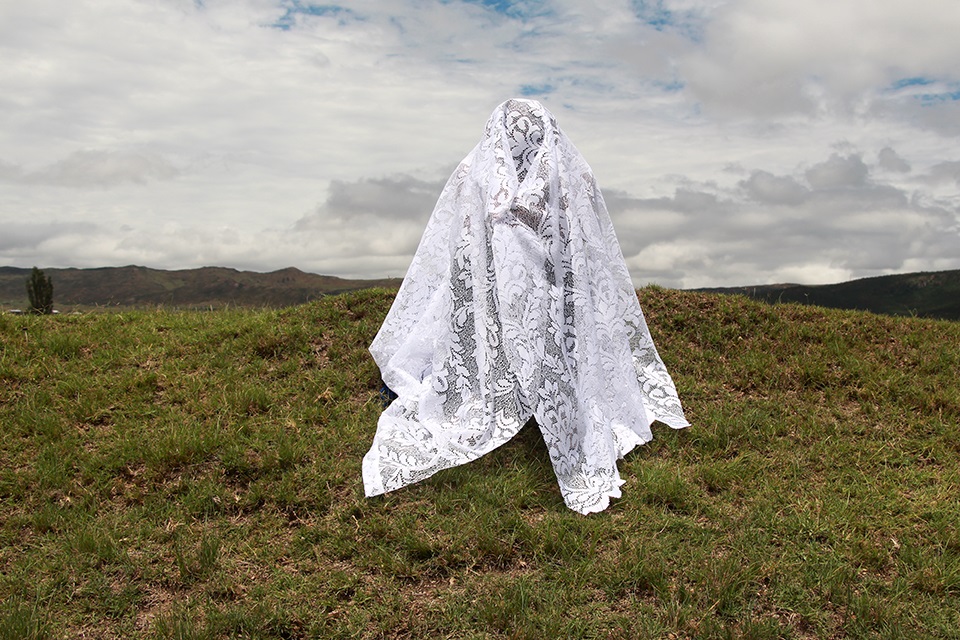
Thandiwe has two works on show that dissect displacement. A photograph of her standing on a ladder carrying a man’s blazer in her hand titled “kwawze kubenini”- for how long reflects on the question “how long will I have to climb ladders as a woman to be seen?”. This works unpacks the sense of displacement womxn feel when trying to exist in anti-feminine spaces. In the work “indawo yam”- my place Thandiwe is photographed sitting on a small hill covering herself with a lace curtain, creating her own place of safety.
Thandiwe expressed the importance of this exhibition outside of the themes that they unpack. She highlighted the difficulty in finding womxn photographers of colour as references or sources of inspiration in the library besides the work of Zanele Muholi. “It becomes important to have this exhibition because we are all individual photographers working in a variety of creative and exciting ways,” she expressed. Thandiwe added that they thinking about working on an idea after the exhibition in the spirit of opening up a space for womxn photographers of colour, and creating an archive. So watch this space!
Displacement will open on the 4th of May at 99 Loop Gallery in Cape Town.
